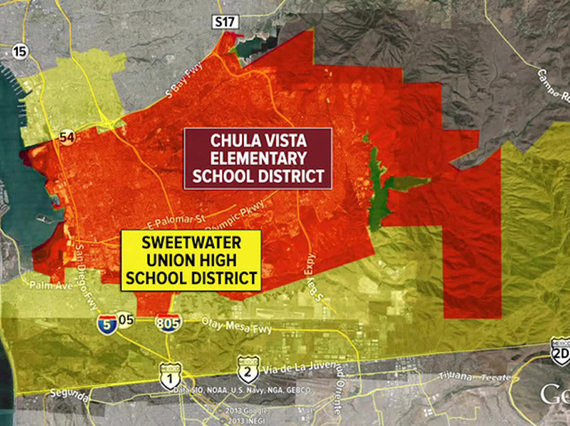When it is becoming clear that creativity and innovation are the benchmarks of the new global knowledge economy, California, and San Diego in particular, has been reinventing its systems of education.
In doing so, San Diego business, government and all regional enterprises will be getting the talent they need to succeed in the new economy. While many cities are also reinventing their schools for the innovation economy, at least in California, San Diego is taking the challenge seriously.
Last year, the California Arts Council together with the California Department of Education proudly announced a "Blueprint for Creative Schools" which, it hopes, eventually will be adopted by all California schools.
San Diego, however, has seized the lead in fostering the concept of creative schools and is helping give life to the state's effort to market the "Blueprint " to schools throughout California.
The Blueprint is not just another government report to gather dust. It is a well thought-out set of recommendations and an action-oriented directive with recommendations that touch on every aspect of teaching and learning in all K-12 schools. But what makes this effort most attractive is the commitment to developing a long-term agenda, insuring sustainability and creating a program of assessment and accountability.
Significant, also, is the creation of CREATE CA, a new non-profit coalition charged with ongoing convening of the California arts education community, coordinating action among the members of the coalition, and broadly marketing arts education advocacy to the greater public.
San Diego had several representatives on the state committee drafting the "Blueprint" and had the opportunity to showcase several initiatives. More, San Diego seems to have taken the lead in developing creative schools, schools giving our young people the new thinking skills needed to succeed in a innovation economy, and economy that depend on a creative and entrepreneurial skill set.
r
Chula Vista Unified, for example, recently announced $15 million for the arts and art infusion-teaching all disciplines through the arts-over three years. Superintendent Francisco Escobedo said at the time, "As part of our initiative to infuse 21st Century skills into our learning outcomes, the arts are a perfect medium to enhance collaboration, creativity and critical-thinking skills throughout our system."
San Diego Unified is turning Burbank Elementary into an art and art infused school in cooperation with Turnaround Arts: California modeled after a similar Obama Administration program. Superintendent Cindy Marten plans to do similar efforts with every school in her district over time. More, the U.S. department of Education has underwritten an arts integration initiative called "Learning Through the Arts" in twenty-two elementary schools.
And High Tech High, a charter school, has been receiving a lot of attention for their decision to eliminate teaching specific disciplines per se in favor of practical real world problem solving, often in cooperation with businesses in the community.
Equally significant, the Santee school board decided to make Chet F. Harritt School a magnet program focusing on STEAM subjects--science, technology, engineering, arts, and mathematics. La Presa Middle School in Spring Valley will start a STEAM Academy next year for students in grades 4 through 8, and elementary schools Park Dale Lane in Encinitas, Explorer Charter in Point Loma, and Flying Hills in El Cajon, were selected by CoTA, a San Diego based nonprofit professional development organization that pairs teaching artists with elementary school teachers "to make the arts a lively, essential, and ongoing aspect of elementary school education, to be part of an art integration experiment" over the next three years.
Clearly our schools and the educational curriculum must change and are beginning the process. So too, the communities where young people spend at least half their lives and where their families, friends and fellow citizens live and work must also change. For that we need, to change our thinking about land use, art and culture, water and energy consumption. Why, because the new creative and innovation economy demands we see the urgency of the challenges the new economy demands. We need to nurture, attract and retain the creative class and more, attract industries that want and need those creative employees.

Both the House and Senate passed legislation and signed by the President late last year, that, according to Americans for the Arts, significantly amended the so-called No Child Left Behind act and provided support in favor of a well-rounded education through programs that "integrate academic subjects, including the arts, into STEM (science, technology, engineering, mathematics) courses."
This should open the doors for schools across the country to change their curriculum to include the arts and arts integration.
